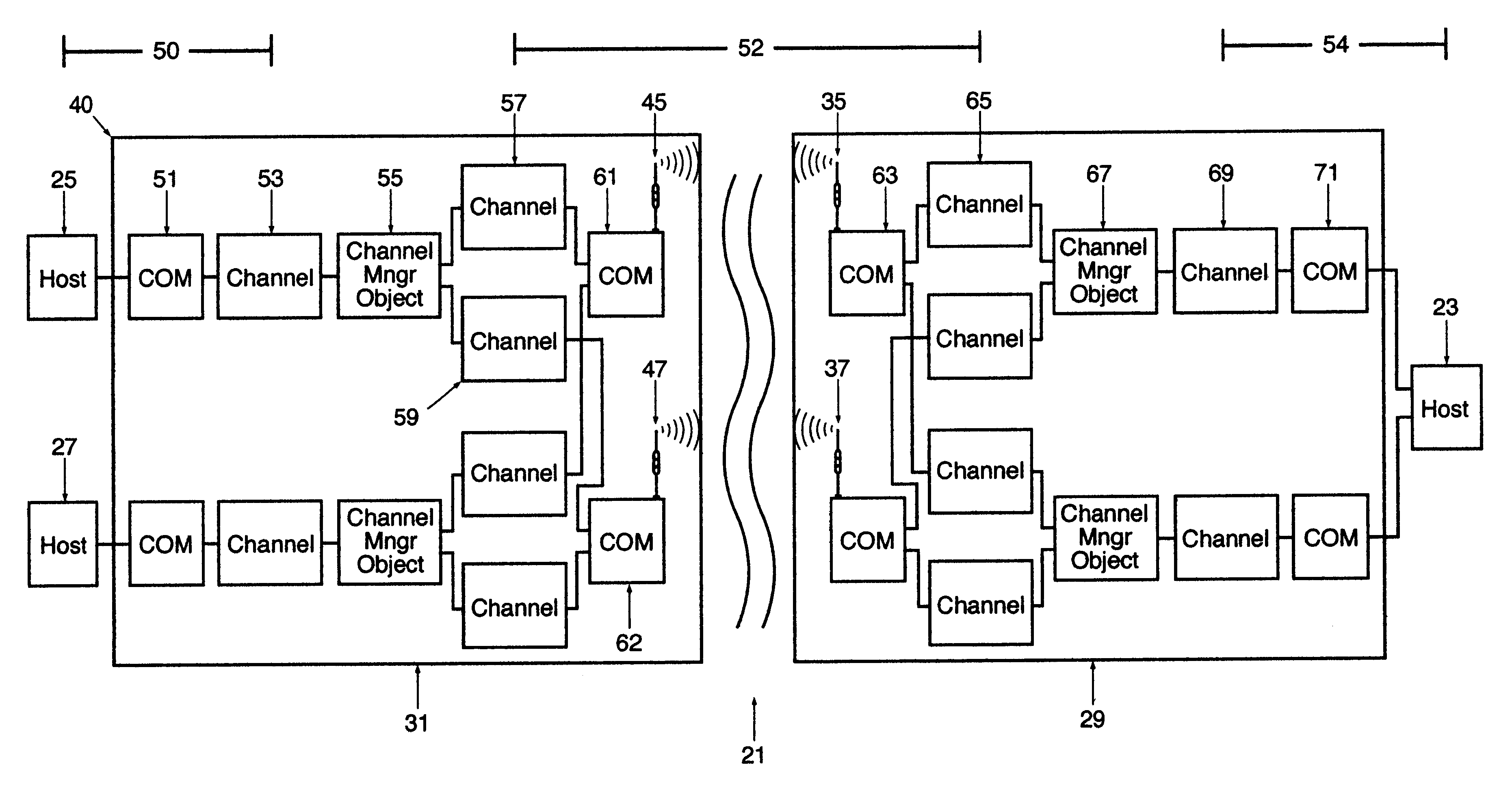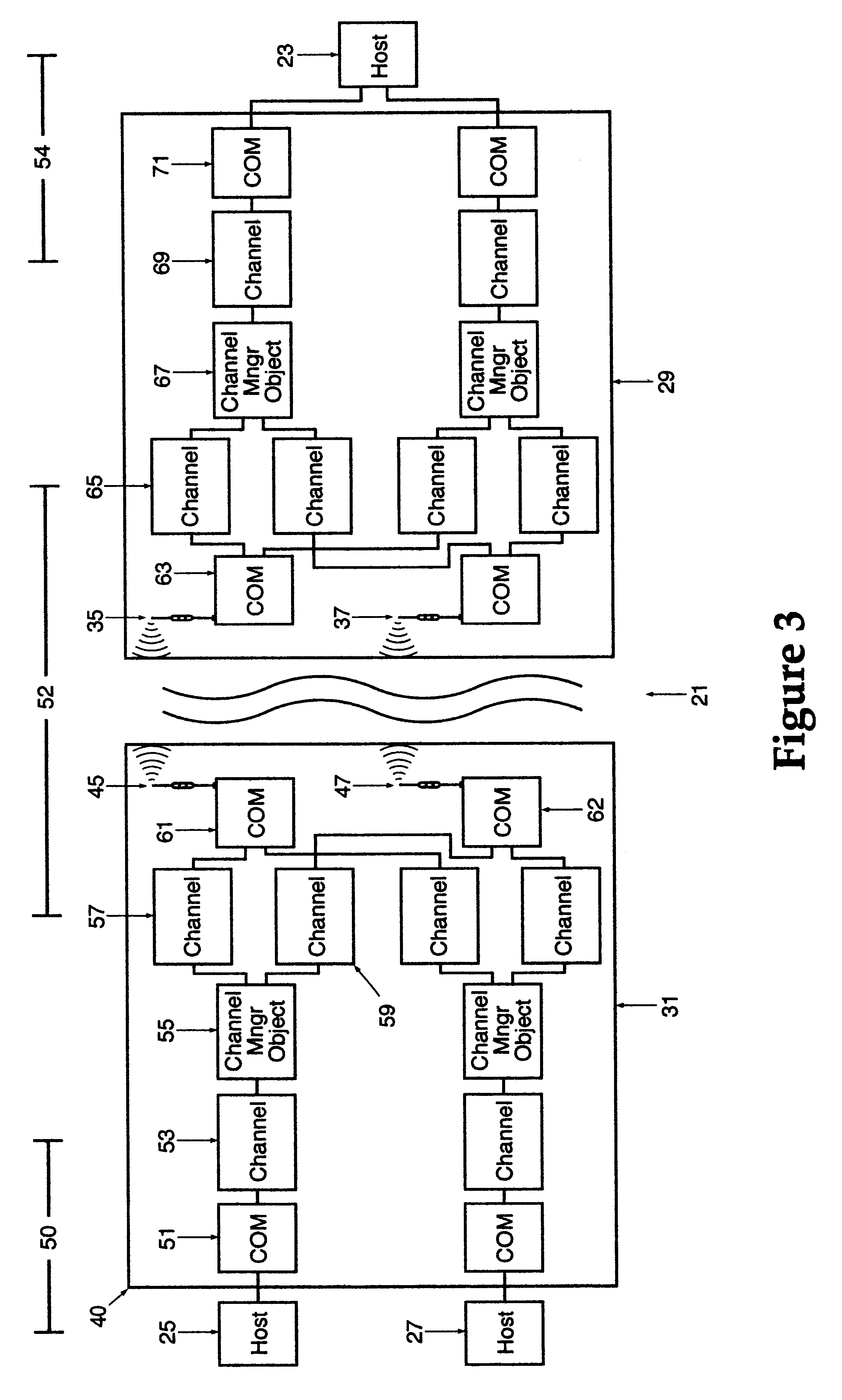This communication has heretofore been facilitated by increasingly costly and / or complex methods.
Leased Lines are expensive, take a long time to deploy, are maintenance heavy, and have no provision for redundancy unless more than one line is run.
ISDN lines have no ability to manage and monitor the remote terminal, have low reliability, unpredictable costs, inflexible transmission speeds and lower security of data.
Dial-up telephone lines also require changes to the central host system, and carry disadvantages including the inability to manage and monitor the remote terminal, low reliability, unpredictable costs, slow transmission speeds and lower security.
As today's industries grow into larger multi-regional or national entities, the hard-wired methods of connection of a remote terminal to the central host system become unmanageable and prohibitively expensive.
However, the native cellular, radio and proprietary communications technologies have associated problems.
Circuit switched cellular communications have the same problems as dial-up lines, including required changes to the central host system, inability to manage and monitor the remote terminal, lower reliability and security, unpredictable monthly costs and slow transaction speeds.
In addition, circuit switched cellular communications are more expensive and less reliable than dial up due to the high pricing structure and the inherent unreliability of the
cellular network.
Finally, the cellular networks are regional or metropolitan based, with no single
cellular network providing nationwide coverage for all types of protocols.
Proprietary radio offers lower monthly communication costs, but this is offset by the high
start up cost associated with building the proprietary radio towers to establish communications.
In addition, the ability to locate and or relocate a remote terminal site is limited by the proximity to the
tower set up for communications.
The latencies inherent in the
data transmission based
satellite network are frequently incompatible with the time
delay tolerances set up by network transport protocols for the purpose of maintaining the integrity of the transaction.
In addition to the problems listed above with various communication devices and methods, the current standard protocols (e.g. TCP / IP, X.25, 3270, SNA / SDLC (Systems
Network Architecture / Synchronous
Data Link Control) and others) have additional problems that exacerbate their ability to transport data securely and reliably over the
wireless network.
These standard protocols are limited in their effectiveness over the wireless networks because of inadequacies in working within time constraints, inadequacies in security, inability to communicate with dissimilar protocols and network topologies, and the
unavailability of single, national network supporting CDPD (Cellular Digital Packet Data),
GSM (
Global System for Mobile communication), and G3 (generation 3) wireless protocols.
While there are national wireless networks available, BellSouth Intelligent
Wireless Data Networks (BSWD Mobitex) is not compatible with other standard protocols used by older host systems, thus requiring expensive and extensive upgrading of the entire host system.
Another wireless transport protocol, UDP / IP, has the additional problem of
data loss during the communication process.
None of the standard devices and methods of
wireless data transportation have the ability to transition between different transport protocols or across different wireless networks.
Even where an application is written to work on a
wireless network, differences in the protocols supported by the different wireless networks render the communication ineffective on different wireless networks.
For example, many of the current networks use the TCP / IP protocol, but the BSWD Mobitex system does not accept that method and has devised a separate protocol.
Thus, an application written to communicate over TCP / IP would be ineffective over a BSWD Mobitex network.
This limits the applicability of wireless networking to
usability over a single communication network and forces the host to accept that network's limitations.
Previously, no combination of communication network and protocol offered easy seamless and reliable communications from remote and mobile locations.
The simple definition of the path from the remote device to the host could be challenging when the two devices were attached to different networks using different protocols.
There are few devices available that perform protocol conversions between communicating devices in dissimilar network environments.
Of those devices that do perform protocol conversions, they all fall short of the need to connect remote communicating devices quickly because of their inability to resolve the inherent losses of data communications over the wireless network.
The navigation of
transaction data over the wireless networks and then over the native host networking environment is difficult and unreliable.
 Login to View More
Login to View More  Login to View More
Login to View More 


